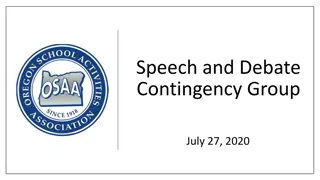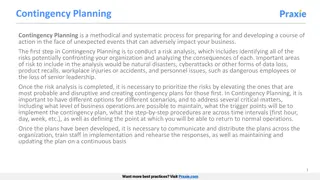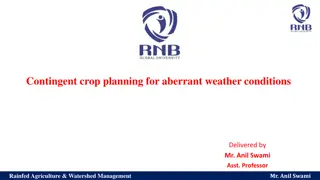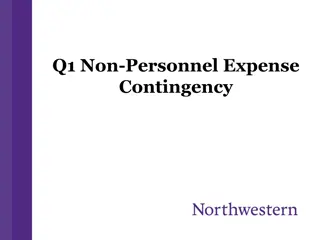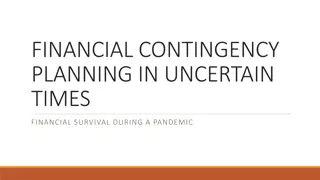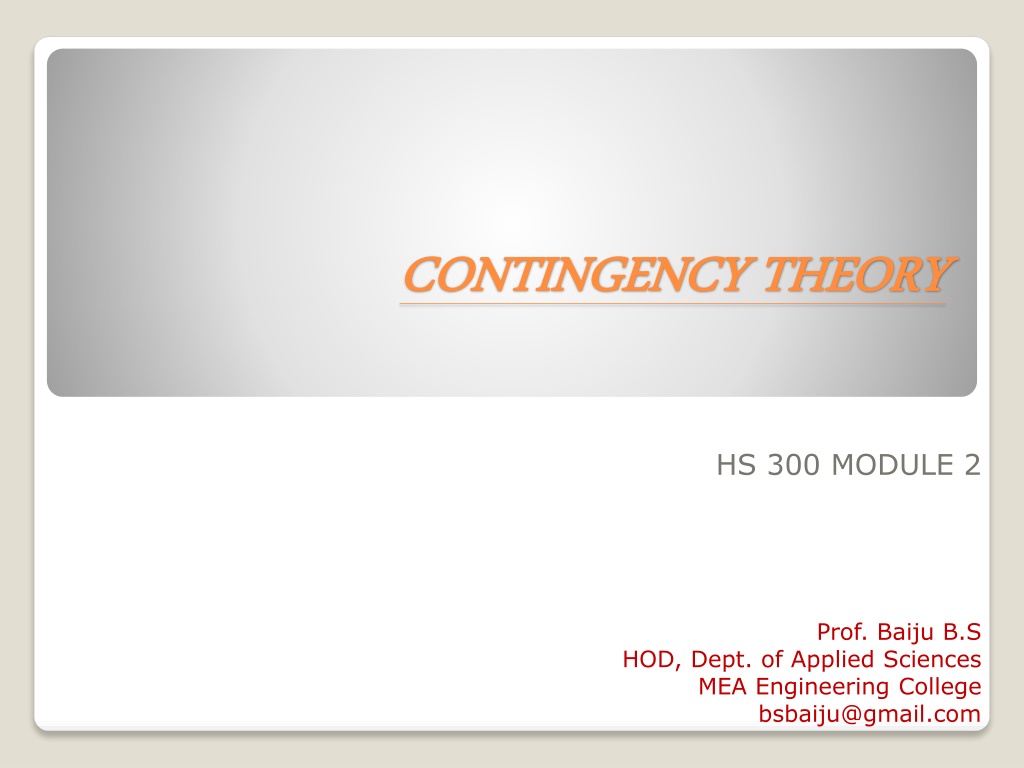
Understanding Contingency Theory in Organizational Leadership
Contingency theory suggests that there is no one best way to organize and lead, emphasizing that the effectiveness of leadership styles is contingent on various internal and external factors. It advocates for a situational approach, considering the unique context of each managerial situation. The theory highlights the importance of aligning management styles with the tasks at hand and the nature of work groups for organizational success. Learn how to apply contingency theory in motivating, leading, and structuring organizations, along with its implications for employee development, decision-making, communication, and control systems.
Download Presentation

Please find below an Image/Link to download the presentation.
The content on the website is provided AS IS for your information and personal use only. It may not be sold, licensed, or shared on other websites without obtaining consent from the author. Download presentation by click this link. If you encounter any issues during the download, it is possible that the publisher has removed the file from their server.
E N D
Presentation Transcript
CONTINGENCY THEORY CONTINGENCY THEORY HS 300 MODULE 2 Prof. Baiju B.S HOD, Dept. of Applied Sciences MEA Engineering College bsbaiju@gmail.com
Fiedler, 1964 Fiedler, 1964 There is no one best way of organizing / leading and that an organizational / leadership style that is effective in some situations may not be successful in others. The optimal organization / leadership style is contingent upon various internal and external constraints.
William Richard Scott "The best way to organize depends on the nature of the environment to which the organization must relate".
Important ideas of Contingency Theory Important ideas of Contingency Theory There is no universal or one best way to manage Wide range of external and internal factors must be considered and the focus should be on the action that best fits the given situation Effective organizations not only have a proper 'fit' with the environment but also between its subsystems The needs of an organization are better satisfied when it is properly designed and the management style is appropriate both to the tasks undertaken and the nature of the work group. Each managers situation must be viewed separately Managers need to be developed in skills that are most useful in identifying the important situational factors.
PROPERTIES Theory is equally important for every organization Theory doesn't believe in 'one best way' so many methods and principles may be used in Every situation is unique so manager HAS TO each and every situation INDIVIDUALLY INDIVIDUALLY. An authoritarian leadership style may be more appropriate than a leadership style that tries to get workers internally motivated. HAS TO be able to analyze
Applied in activities of motivating, leading and structuring the organization. The other potentials of application are; A. Employee development and training B. Decision of decentralization C. Establishment of communication and control systems D. Planning info decision systems
CRITICISMS CRITICISMS The logical extension of the contingency approach is that all situations are unique. If this is true, then management can be practiced only by intuition and judgment, thereby negating the value of prior knowledge and wisdom. On research level, contingency theory has been criticized for being theoretical
EFFECT ON A MANAGER By applying contingency theory to the study of management, Manager will be able to identify and to solve problems under different situations. He will recognize that the successful application of a technique in one situation does not guarantee success in another. Rather, he will be able to examine each situation in terms of how it is affected by the contextual, organizational, and human dimensions. As a result, his overall ability to correct problems and to become more effective as a manager will increase.
STORY OF A SHOE MAKER STORY OF A SHOE MAKER A shoe manufacturer is faced with decreasing profits (classical management theory). As a manager - time study from the belief that the decline in profits is due to lower productivity on the part of the workers (Behavioural management theory) may attempt to involve workers more fully in decisions concerning the methods to use in producing the shoes based on the premise that this will motivate workers toproduce more (systems theory). may establish a committee of sales and production personnel to coordinate the production and distribution of goods under the assumption that large inventories are responsible for the decline in profits
Application of a contingency Perspective Application of a contingency Perspective Will enable the manager to examine the situation and to determine the cause of decreased profits before a new procedure or programis implemented. Contingency theory is designed to provide the manager with the capabilitiestoexamine numerouspossible solutionsto a problem




